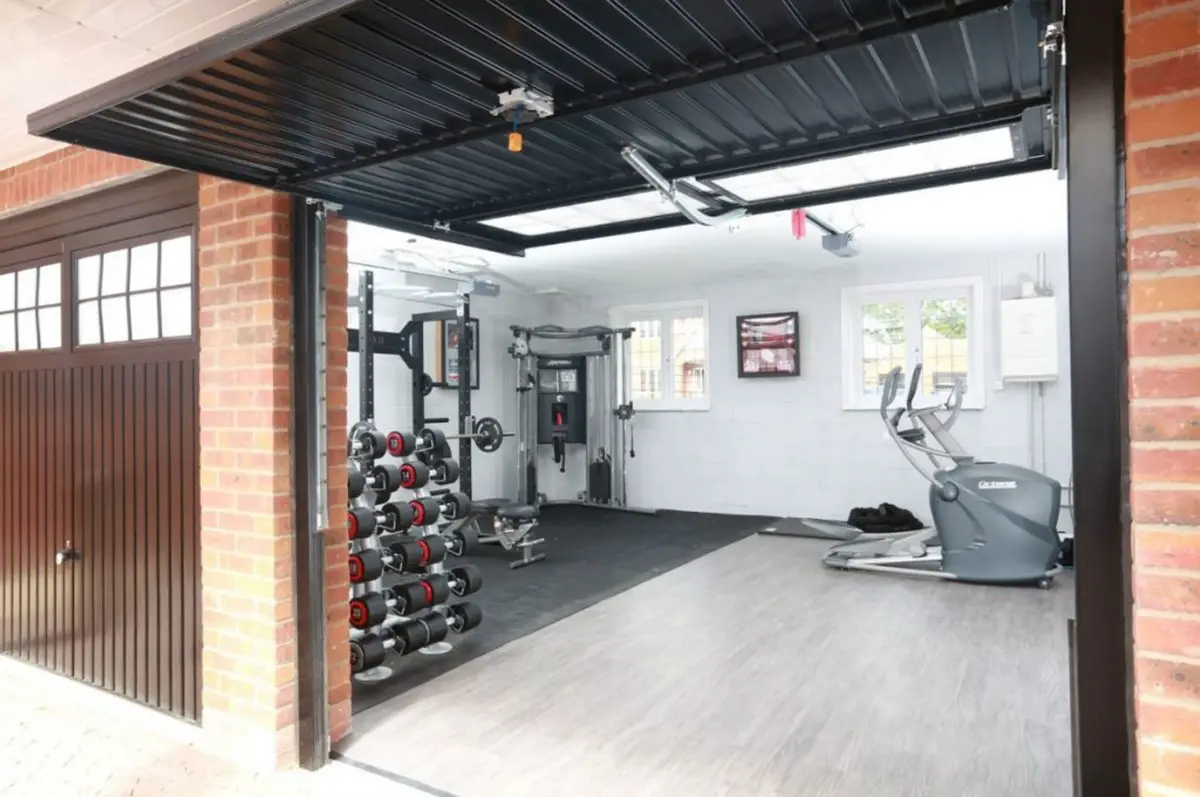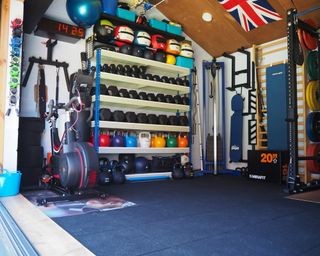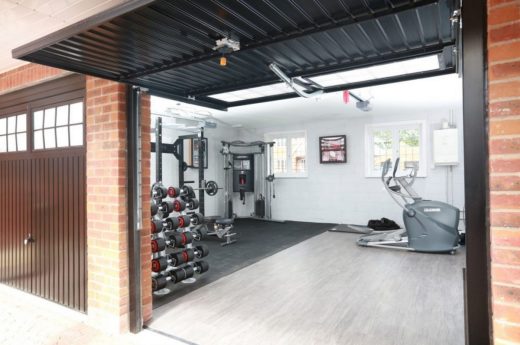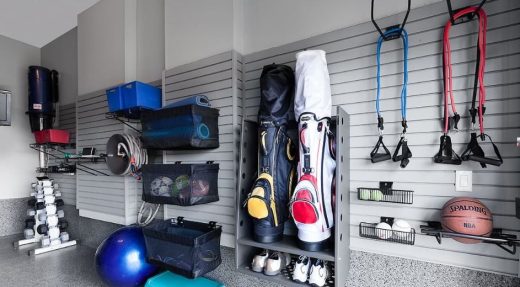Creating a home gym in garage, Good design and organization, Efficient building advice
Creating a Home Gym: Designing and Organizing Your Garage
10 April 2024
Ever wonder how to turn your garage into a fitness paradise? Before designing and organizing your home gym, ensuring the safety and functionality of your garage space is crucial. A reliable garage door is foundational to creating a secure workout environment. With expert solutions from Garage Doors Winnipeg, you can start your gym transformation with confidence.
This guide will show you how to design and organize a home gym that suits your needs, from selecting the right equipment to maximizing space and creating an inspiring environment. Let’s get to it!
Making a Home Gym: Design and Organize Your Garage for Fitness
The journey to a home gym starts with a vision. Envision what your ideal workout space looks like. Do you see a robust weightlifting area, a serene spot for yoga, or a versatile space for various exercises?
Assessing your garage’s potential is the first step. Clear out clutter and measure the area to know what you can fit.
Think about the garage’s layout, ceiling height, and floor condition. Are there elements that need modification, like adding insulation for temperature control or soundproofing for noise reduction? Planning involves not just fitting equipment but creating a space that feels open, safe, and conducive to your workout routine.
1. Design Considerations
You need clear zones for different activities, A space for cardio machines, an Area for weights, and a Free zone for stretching or yoga.
Ventilation is crucial; a well-ventilated space maintains air quality and comfort.
Make sure large gym equipment does not touch the garage door opener or any other garage door parts, design according it.
Natural light is a bonus, making the space feel welcoming. If windows are limited, invest in bright, energy-efficient lighting to keep the area well-lit and energetic.
2. Equipment and Storage
Selecting the right equipment is about balancing desire with practicality. Prioritize machines and tools that match your fitness goals and fit your space.
If you’re short on room, opt for multi-functional equipment like adjustable weight benches or resistance bands.
Storage is equally important to maintain a tidy area. Utilize vertical space with wall-mounted shelves or hooks for hanging items like jump ropes or resistance bands. Heavy-duty cabinets or racks can store weights and larger equipment.
The goal is to have a place for everything, keeping the floor clear and your workout space organized. Also, consider the ease of accessing your equipment; you shouldn’t have to move multiple items to reach what you need during your workout.
3. Design and Aesthetics
The look and feel of your gym can significantly influence your motivation. Aesthetic considerations should reflect your personal style and create an environment that encourages you to exercise. Color plays a big part; cool tones can be calming, while warm colors might energize you.
Mirrors are not only practical for form checking but also make the space appear larger and brighter. Personal touches like artwork, motivational quotes, or a sound system can enhance the atmosphere.
Ensure the gym reflects your tastes and preferences, making it a place you’re excited to spend time in. Lighting should be bright enough to safely perform exercises but can also be adjustable to match the mood or time of day.
4. Creating a Functional and Motivating Space
Your home gym should be more than just functional; it should inspire and motivate you. Designate areas for different types of workouts to create a logical flow that mimics the structure of a professional gym. This setup helps in maintaining focus and efficiency during workouts.
For example, place cardio equipment near the entrance for warm-ups, a weightlifting area in the center, and a quiet corner for stretching and cool-downs.
Consider adding technology like a TV for workout videos or a sound system for music to keep you energized and engaged.
The environment should be adaptable to your evolving fitness needs, allowing for changes in your workout regimen or equipment upgrades.
5. Essential Equipment and Essentials
Identifying the essential equipment for your home gym hinges on your fitness objectives and the types of workouts you enjoy. Cardio enthusiasts should consider space-efficient machines like treadmills or stationary bikes.
Those focused on strength training might opt for a versatile set of free weights, a bench, and a squat rack for a range of exercises.
Quality flooring is a cornerstone of a safe and functional gym; durable, shock-absorbent mats are vital for protecting both your equipment and the garage floor.
These mats also reduce the risk of injuries by providing a stable surface to work out on. Additionally, think about accessory equipment like jump ropes, kettlebells, or a pull-up bar to diversify your exercise regimen.
Remember, the goal is to create a balanced space where you can perform a variety of workouts effectively and safely.
Creating a Home Gym Conclusion
Creating a home gym in your garage is a rewarding project that can lead to a healthier lifestyle and a more personalized workout experience. With careful planning, the right equipment, and a touch of personal style, you can design a gym that not only meets your fitness needs but also motivates you to maintain a regular exercise routine.
Comments on this guide to Creating a Home Gym: Designing and Organizing Your Garage article are welcome.
Home Gyms
Home Gym and Fitness
Home gym must-haves for workouts
Guide for building an in-home sports facility
Citizen Fitness Center in Heping District Tianjin
Dive into the all-in-one home gym experience
Garage Doors
Garage Door Posts
Garage Door Mechanisms: Torsion and Extension Springs
Motorized garage door screens in your house
Building Articles
Residential Architecture
Comments / photos for the Create extra space for storage and gym with perfect garage solutions page welcome










